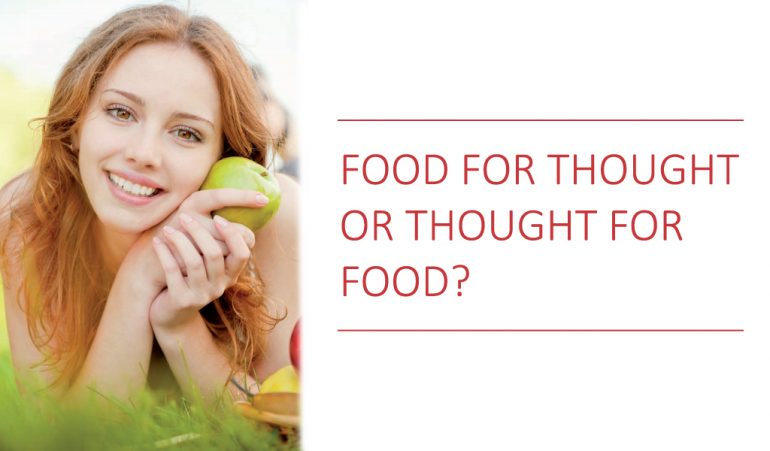I know a woman who visits her elderly mother several times each day, and since her journey is short she may walk or drive depending on her fancy. Recently she told me how her mother had one day casually inquired by what means she had traveled there, and after struggling for a moment to remember, she walked over to the window to see if her car was parked outside.
It seems hard to believe someone could drive even the shortest distance without a conscious recollection of the journey; yet before we succumb to the fear of encountering this driver on our roads, we might consider how often we have experienced such mindlessness in our own lives.
If you have never filled a diesel car with regular petrol, discovered your TV remote in the fridge alongside the tomatoes, or found yourself standing in a room unable to remember the reason why you went there in the first place, then you may be one of the rare few who can claim immunity to such bouts of mindlessness, though I cannot. I have searched in vain for items which sit in full view on a shelf less than two feet in front of me, found keys in places I would never dream of putting them, and more than once drank an entire cup of coffee without any memory of the event. Welcome to the world of mindlessness, a place where anything can happen, primarily because our attention has drifted away on the breeze of illusory thinking and is no longer centered in the reality of our present moment experiences. We mindlessly eat, drive, shower, or dress while thinking about where we have been or where we are going, what we should have said or what we will say in future, and while these thoughts are undoubtedly important, we should also be mindful that each moment we spend mesmerized in this trance of non presence is precious time in which life’s rainbows and sunsets pass by unnoticed.
Beguiled by images that have no reality beyond thinking, we become blissfully desensitized to the present, seduced by receding shadows of what has passed or the images of a future which may never exist outside our imagination. Almost all worries are past- or future-related images of fear which by definition must be unreal, yet despite knowing this we continue to allow such catastrophic illusions to captivate our attention like spellbound children at a magic show.
Beguiled by images that have no reality beyond thinking, we become blissfully desensitized to the present, seduced by receding shadows of what has passed or the images of a future which may never exist outside our imagination.
Mindfulness, on the other hand, dispels the unreal images of non-present thought, empowering a higher awareness in which problems seem less important, insights ripen, and solutions begin to glow like approaching lights on a dark and distant horizon.
In Western culture, there is now a rapidly growing awareness of the health benefits associated with mindfulness meditation due in no small part to the abundance of reliable research which confirms the essential role it plays in healing and general well-being. Researchers at Stanford University in California compared hundreds of different relaxation methods and found clear evidence that regular meditation is at least twice as effective as any other form of relaxation; while scientific studies indicate that people who practice daily require 50 percent less hospital visits and experience 70 percent fewer cases of heart-related illnesses. Perhaps we shouldn’t be surprised by these findings since the meaning of the word meditation originates from the Latin word mederi, meaning to heal. It seems we can all benefit our entire system just by establishing the practice of a little mindfulness at least once or twice into each day.
However, knowing about the benefits of mindfulness and practicing it are not the same and it seems that doing what we know is not as easy as knowing what to do. Primarily because our mind is rarely accustomed to stillness. This may also explain why so many of us find it hard to develop regular habits of meditation when we first begin. Our subconscious is conditioned primarily through habit and quickly internalizes whatever we consistently show it. Though for most of us the difficulty lies in consciously remembering to keep up any new activity until we reach a point when it becomes established as an unconscious habit.
Instead of trying to find extra time to practice mindfulness, we could leave everything in our current routine undisturbed and change how we do what we do to include mindfulness rather than making extra time to introduce it as a practice.
So is there an easy way to establish mindfulness into our daily routine and if so, how?
The obvious answer might be to set aside time each day in which to practice, though anything new is by definition unfamiliar and therefore can be difficult to internalize, especially if a new activity requires us to change our routine in some way. Remembering to set aside time in what may already be a very busy schedule may make sense in theory but in reality requires a steely determination. There is another less formal way to seamlessly internalize unfamiliar activities until they become established as an unconscious daily habit. Instead of trying to find extra time to practice mindfulness, we could leave everything in our current routine undisturbed and change how we do what we do to include mindfulness rather than making extra time to introduce it as a practice. Put simply, rather than trying to set aside a daily period of time for mindfulness, we could practice it while we are doing what we would routinely be doing anyway. For example, everyone has to eat, it’s not an optional activity yet it provides an excellent opportunity for mindfulness since we must do it at least once every day.
Each mealtime provides an excellent and natural opportunity to internalize food and establish mindfulness by linking it to an existing and essential practice.
With this in mind you may find value in the following technique:
We don’t have to live in a cave in the Himalayas for ten years to learn mindfulness or enjoy the associated benefits to our health and well-being.
The above strategy can be applied to any daily routine though it will be especially beneficial when applied to eating, since it cultivates a slower eating style and a raised awareness of being full which will prove particularly helpful to anyone trying to lose weight. Some of us will need no help establishing mindfulness as a habit; yet for many of us, our promises and good intentions are too frequently lost in the daily scramble for our time and attention. Linking mindfulness to something we must do anyway such as eating, driving, showering, or dressing simply offers us an easier and natural way to cultivate what may be the healthiest and most beneficial habit of all.
Blaise Pascal, the 17th Century scientist aptly said, “All man’s miseries stem from his inability to sit silently in a room and do nothing.”
Mindful Mealtimes
- Pause just before you begin to eat and notice what is on your plate before you begin. Notice the colors, smells, textures and arrangement of the food in front of you.
- For the next five minutes commit to chew each mouthful at least 30 times before you swallow it. The process of counting holds your attention in the present and prevents your mind from wandering onto past- or future related thoughts. This is also an excellent way to ensure your food is effectively ready for your stomach before it is swallowed.
- Put down your fork between each mouthful as this will slow down any unconscious inclination to eat quickly. Many of us eat too quickly because our unconscious mind picks up on the fact that our fork is loaded and waiting in our hand.
- Avoid watching television or answering the phone while you eat. This is extremely important because both will quickly direct your attention elsewhere. Remember, your unconscious mind is unable to distinguish between what is real and imagined and you may find yourself eating more quickly as a result of what you hear and see.







